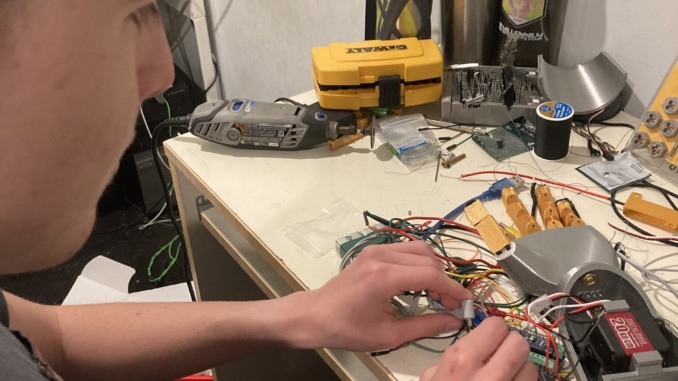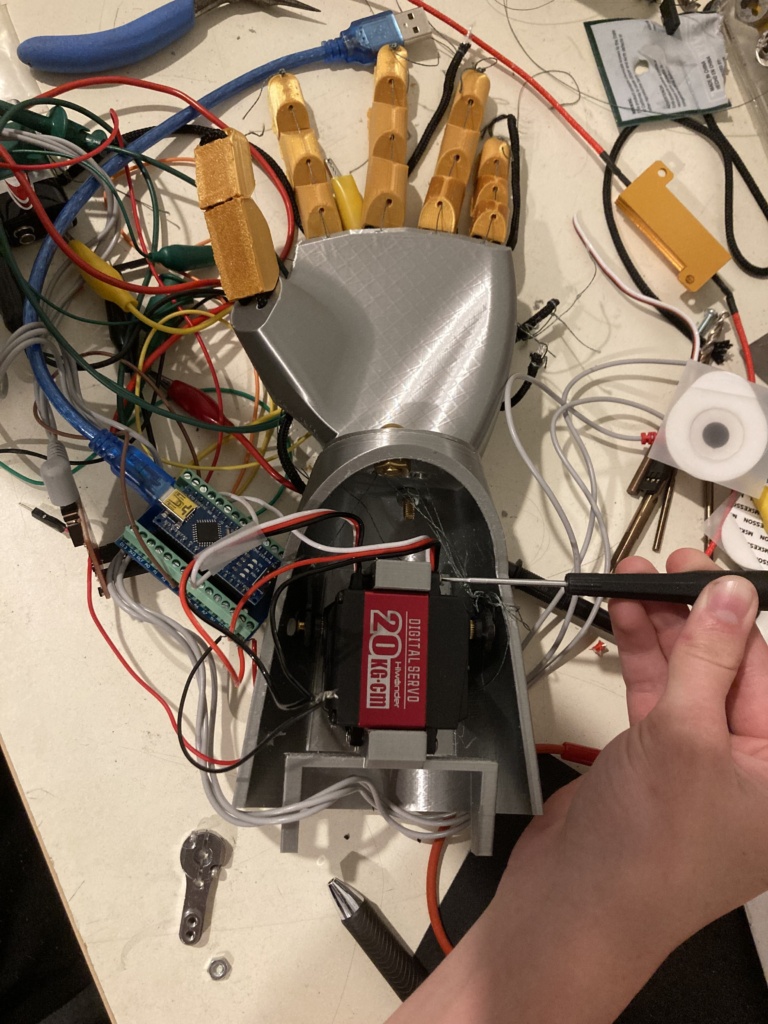
Seth I. Pickens
Executive Features Editor
Costa’s Doctors of Tomorrow Club was founded in November by sophomore Mason Barrett as a place to bring together students passionate about health and medicine. The club participates in many volunteer activities, fundraisers, and projects.
Their most recent, and most ambitious project to date is their prosthetic arm. Club President Barrett and other members have designed and engineered every aspect of the prototype(V1).
“Our prosthetic arm is powered by a myoelectric sensor, which reads electrical signals in the muscle,” Barrett said. “This signal is translated into code which is processed by an Arduino built inside the arm. The computer then activates servo motors connected to artificial tendons to retract the fingers on the arm.”
Barrett has spearheaded the development of the prosthetic with assistance from others, notably, junior Shane Sheth, president of Costa’s Engineering Club.
“My role in the club is kind of as a liaison,” Sheth said. “[The Engineering Club is] partnering with the Doctors of Tomorrow to make this prosthetic arm. We weren’t working on any other projects and I saw it as a perfect opportunity to combine our clubs’ knowledge.”
According to Barrett, the main focus of the prototype is to maximize not only reliability, but affordability. Trying to design and create cost-effective prosthetics hasn’t been easy though. Constructing V1 has come with several technical difficulties
“I have come across many issues in the prototyping process,” Barrett said. “Mainly, the sensor can be very difficult to reliably read muscle activity, and even though I have greatly improved the design, it still can be finicky at times.”
“Additionally, strength issues are present, as 3D-printed plastic is quite strong, but needs very meticulous detailing to be durable enough for everyday use, especially as we plan to be able to directly compete with established prosthetics companies.”
“Keeping the fingers secure also remains a challenge, as the bracing on it is much weaker than other parts of the arm.”
To overcome these issues, Barrett has been working hard in order to supply the club with funding, the main source of revenue being Club Days. This can’t sustain them forever though, so the club has started looking for other means of funding.
“My wallet has suffered in the design process as I have used only personal funds for the first prototypes,” Barrett said. “ I plan to fundraise at stem night, as well as pitch to larger companies for funding (charity) as our organization will be registered as a 501(c) 3 nonprofit organization.”
According to Barrett, even though this process has been taxing, he’s still as eager as he was when he first started. With the first prototype done, he has big plans for version and even bigger plans for the club as a whole.
“I plan on making a version reliable enough to give out to people in third world countries with repair guides being published and spare parts being abundant and cheap (3d printed or very common worldwide). My goal is to be the first high schooler to start a successful biomedical engineering organization.”


Leave a Reply